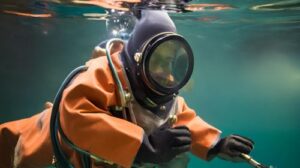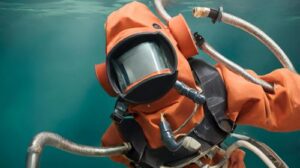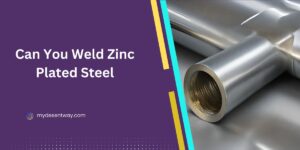Table of Contents
- 1. A Brief Look at Underwater Welding Suits
- 2. Evolution and Development of Underwater Welding Suits
- 3. Components of a Modern Underwater Welding Suit
- 4. Challenges and Risks in Underwater Welding
- 5. Training and Certification for Using Underwater Welding Suits
- 6. Applications and Industries Utilizing Underwater Welding Suits
- 7. Benefits and Advantages of Using Underwater Welding Suits
- 8. Innovations and Future Trends in Underwater Welding Suits
- Conclusion
Diving into the depths of industrial marvels lies a crucial tool – the underwater welding suit. These suits encapsulate safety and precision in the heart of underwater construction and repair. From their historical origins to cutting-edge advancements, they’ve transformed how we navigate and conquer submerged challenges.
Let’s plunge into the world of these specialized suits, essential in industries from oil and gas to scientific exploration. Explore how these suits blend innovation and expertise to navigate the depths with unparalleled efficiency and safety.
1. A Brief Look at Underwater Welding Suits
Underwater welding stands at the nexus of craftsmanship and adventure, where skilled professionals navigate the depths to mend and build structures beneath the waves. This specialized form of welding plays a pivotal role in industries like offshore construction, ship repair, and underwater infrastructure maintenance.
Importance of Underwater Welding
The significance of underwater welding lies in its ability to facilitate repairs and construction without the need for dry-docking or bringing structures to the surface. This saves substantial time and resources, which is crucial in industries where downtime equates to financial losses.
Purpose and Necessity of Specialized Suits
Underwater welding operates in a challenging environment. The welding process takes place in high-pressure, low-visibility, and often corrosive conditions. To enable safe and effective operations, welders rely on specialized suits designed explicitly for underwater use.
These suits act as a protective barrier, shielding welders from the elements, maintaining body temperature, and providing life support during extended periods submerged beneath the surface. They are engineered to withstand the extreme conditions encountered underwater while allowing for freedom of movement and functionality essential for welding tasks.
The underwater welding suit becomes a second skin for the welder, combining technological innovation and ergonomic design to ensure both safety and efficiency in a hostile underwater environment.
2. Evolution and Development of Underwater Welding Suits
Historical Overview
The inception of underwater welding dates back to the early 20th century, marked by crude methods and basic protective gear. Early pioneers improvised with rudimentary equipment, laying the foundation for a craft that would evolve remarkably over time.
As demand grew for underwater construction and repair, so did the need for more sophisticated welding techniques and specialized suits. The evolution of these suits paralleled advancements in welding technology, gradually enhancing safety and efficiency for underwater welders.
Technological Advancements
The journey from the initial diving suits retrofitted for welding tasks to modern, purpose-built underwater welding suits has been a testament to human ingenuity and engineering prowess. Technological innovations have revolutionized these suits, ensuring welders’ safety while allowing for increased mobility and precision.
Materials science played a pivotal role in this evolution, incorporating durable, corrosion-resistant fabrics and advanced polymers that withstand the harsh underwater environment. Seamlessly integrated helmet systems, reinforced gloves, and tailored designs have elevated these suits to meet the demands of modern underwater welding.
The transition from traditional diving attire to meticulously crafted suits equipped with life support systems and ergonomic design elements signifies a landmark progression in underwater welding. These advancements have safeguarded the welders and optimized their ability to carry out intricate welding tasks in challenging underwater conditions.
The evolution and development of underwater welding suits underscore the continuous quest for innovation and safety, culminating in cutting-edge equipment that empowers welders to navigate the depths confidently and precisely.
3. Components of a Modern Underwater Welding Suit
Materials Used
Modern underwater welding suits are a harmonious blend of advanced materials engineered to withstand the rigors of underwater environments. These suits incorporate high-grade neoprene, latex, and synthetic rubber materials, offering flexibility, durability, and resistance to water ingress.
The outer layers of the suits are typically composed of materials resistant to abrasions and punctures, ensuring protection against sharp edges and rough surfaces encountered during welding tasks. Additionally, the suits are often lined with insulating materials to maintain the welder’s body temperature in the cold underwater environment.
Design Features for Safety and Functionality
The design of underwater welding suits prioritizes both safety and functionality. These suits are tailored to provide a snug yet comfortable fit, allowing freedom of movement crucial for executing precise welding maneuvers underwater.
Key components include:
- Helmet Systems: Integrated helmets with transparent visors ensure visibility while protecting the welder’s head and face from debris and contaminants.
- Sealing Mechanisms: Watertight seals at joints and closures prevent water entry, maintaining the suit’s integrity during prolonged underwater exposure.
- Reinforced Gloves and Boots: Specialized gloves and boots crafted from durable materials offer dexterity and protection against abrasions, ensuring a firm grip and secure footing in underwater conditions.
- Life Support Systems: Some advanced suits incorporate life support systems providing a breathing gas supply, allowing welders to work for extended periods without resurfacing.
The combination of these meticulously designed components ensures that modern underwater welding suits not only shield the welder from environmental hazards but also enable them to execute intricate welding tasks efficiently beneath the water’s surface.
4. Challenges and Risks in Underwater Welding
Environmental Hazards
Working underwater poses inherent challenges due to its dynamic and often harsh nature. Welders face limited visibility, strong currents, and unpredictable marine life hazards. The reduced visibility can make navigation and welding precision challenging, while strong currents hinder stability and control during operations.
Moreover, underwater locations often harbor corrosive substances, such as saltwater, which can accelerate metal deterioration, making welding tasks more complex and demanding.
Pressures and Temperature Variations
One of the most significant challenges in underwater welding is dealing with extreme pressures. As divers descend deeper, water pressure increases, exerting immense force on both the welder and the equipment. This necessitates specialized suits and equipment capable of withstanding these pressures without compromising welder safety.
Additionally, temperature variations underwater present another hurdle. The environment can rapidly transition from frigid temperatures to warmer conditions, demanding suits that can maintain the welder’s body temperature while accommodating these fluctuations.
Despite these challenges, modern underwater welding suits are engineered to mitigate risks and ensure welder safety. Their design, materials, and features are specifically crafted to combat the environmental challenges encountered during underwater welding operations, allowing professionals to execute their tasks with precision and safety beneath the waves.
5. Training and Certification for Using Underwater Welding Suits
Required Skills and Qualifications
Proficiency in underwater welding necessitates a diverse skill set and a comprehensive understanding of both welding techniques and diving protocols. Individuals aspiring to become underwater welders typically pursue specialized training programs that encompass:
- Welding Expertise: Mastery of welding techniques is fundamental, including knowledge of various welding processes such as shielded metal arc welding (SMAW), gas tungsten arc welding (GTAW), and flux-cored arc welding (FCAW).
- Diving Proficiency: Diversification in diving skills is crucial, involving mastery of scuba diving techniques, underwater navigation, and familiarity with diving equipment.
- Underwater Operations: Understanding the intricacies of operating underwater, including buoyancy control, dive planning, and emergency procedures, is vital for ensuring safety and efficiency.
Safety Protocols and Regulations
Stringent safety regulations and industry standards govern underwater welding to mitigate risks associated with working in a hazardous environment. Regulatory bodies and organizations establish guidelines and protocols concerning:
- Equipment Standards: Ensuring that all underwater welding suits and related equipment meet specified safety standards and undergo regular maintenance and inspection.
- Procedures and Protocols: Implementing standardized procedures for underwater welding operations, including safety checks, communication protocols, and emergency response plans.
- Certification Requirements: Require underwater welders to obtain certifications attesting to their competency and adherence to safety standards before engaging in underwater welding activities.
Comprehensive training programs and adherence to safety protocols not only equip individuals with the necessary skills but also instill a culture of safety, ensuring that underwater welding operations are conducted proficiently and safely in compliance with industry standards.
6. Applications and Industries Utilizing Underwater Welding Suits
Oil and Gas Sector
The oil and gas industry heavily relies on underwater welding for maintenance, repairs, and installations in offshore structures. Subsea pipelines, oil rigs, and various underwater components require periodic inspections and welding interventions, making underwater welding an indispensable skill in this sector.
Shipbuilding and Repair
Shipyards and maritime industries extensively utilize underwater welding for ship repairs and maintenance without the need for dry-docking. Welders conduct repairs on ship hulls, propellers, and other submerged components, ensuring vessels remain seaworthy and operational.
Infrastructure Development and Maintenance
Underwater welding finds applications in infrastructure projects such as bridges, dams, and underwater tunnels. It enables repair and reinforcement of submerged structures, ensuring their structural integrity and longevity.
Scientific and Research Endeavors
In scientific research, underwater welding plays a role in installing and maintaining underwater observatories, scientific platforms, and marine research facilities. It facilitates the construction and repair of scientific instruments and infrastructure in marine environments, supporting various research initiatives.
Environmental Conservation and Marine Exploration
Underwater welding contributes to environmental conservation efforts by repairing and maintaining underwater structures essential for marine life, such as artificial reefs and underwater habitats. Moreover, it supports marine exploration by enabling the construction and maintenance of subsea exploration equipment and installations.
The versatility of underwater welding suits allows professionals to cater to diverse industries, ensuring the maintenance, repair, and construction of critical underwater structures across various sectors, thereby contributing significantly to their operational efficiency and longevity.
7. Benefits and Advantages of Using Underwater Welding Suits
Cost-Effectiveness
Underwater welding suits offer a cost-effective solution for repair and maintenance tasks in submerged environments. Traditional methods often necessitate dry-docking, a costly and time-consuming process. By enabling repairs without the need to surface the structure, these suits significantly minimize downtime and operational costs.
Efficiency and Versatility
The use of underwater welding suits enhances operational efficiency by allowing welding tasks to be carried out swiftly and accurately without relocating structures. This versatility enables welders to navigate intricate spaces and perform repairs effectively, irrespective of the complexities posed by underwater conditions.
Reduced Environmental Impact
Underwater welding, facilitated by specialized suits, reduces the environmental impact associated with traditional repair methods. Avoiding the need for dry-docking minimizes disruptions to marine ecosystems, preventing potential pollution and disturbances caused by moving vessels or structures.
Minimized Operational Downtime
The ability to conduct repairs and maintenance underwater without requiring structures to be removed from service minimizes operational downtime. This advantage is particularly crucial for industries like oil and gas, where downtime translates to significant financial losses.
Enhanced Safety Measures
Underwater welding suits prioritize the safety of welders by providing a protective barrier against the challenging underwater environment. These suits are meticulously designed to withstand extreme pressures, maintain body temperature, and offer life support systems, ensuring the safety and well-being of professionals working in submerged conditions.
The utilization of underwater welding suits revolutionizes repair and maintenance operations in submerged environments, offering a myriad of advantages that range from cost-effectiveness and efficiency to environmental sustainability and enhanced safety measures. These benefits underscore the significance of these specialized suits in diverse industries reliant on underwater welding operations.
8. Innovations and Future Trends in Underwater Welding Suits
Emerging Technologies
The future of underwater welding suits lies in continuous innovation driven by materials, technology, and design advancements. Some emerging technologies poised to shape the evolution of these suits include:
- Advanced Materials: Ongoing research focuses on developing materials with enhanced durability, flexibility, and resistance to corrosion, enabling suits to withstand even more extreme underwater conditions.
- Integrated Sensors and Communication: Incorporating sensors and communication systems within the suits to provide real-time data feedback and improve communication between divers, enhancing safety and efficiency.
- Ergonomic Design Improvements: Further refining the ergonomic design of suits to optimize comfort, mobility, and functionality for welders working in challenging underwater environments.
Sustainability Aspects
Future innovations in underwater welding suits prioritize sustainability, aiming to reduce environmental impact while maintaining or enhancing performance. This includes exploring eco-friendly materials, energy-efficient life support systems, and sustainable manufacturing processes.
Robotic Assistance and Automation
The integration of robotics and automation within underwater welding suits is an area of burgeoning interest. Robotic systems can aid welders by performing repetitive or hazardous tasks, augmenting human capabilities and precision in underwater welding operations.
Adaptability to Industry Needs
Continued research and development focus on tailoring underwater welding suits to meet evolving industry demands. This involves creating versatile suits capable of addressing specific challenges across various sectors, ensuring their applicability in diverse underwater environments and tasks.
The future of underwater welding suits is characterized by a relentless pursuit of innovation, aiming to elevate safety, efficiency, and sustainability while meeting the dynamic needs of industries reliant on underwater welding operations. These advancements herald a promising era, empowering professionals to navigate underwater challenges with greater precision and effectiveness.
Conclusion
In conclusion, underwater welding suits stand as a testament to human ingenuity and innovation, bridging the gap between challenging underwater environments and the skilled professionals navigating them.
From their historical evolution to their current state of technological sophistication, these specialized suits have revolutionized the way repairs and construction tasks are carried out beneath the waves.
Their significance spans industries such as oil and gas, shipbuilding, scientific research, and environmental conservation, enabling efficient, cost-effective, and safe operations in submerged conditions.
As innovations continue to drive their development, these suits will play an increasingly pivotal role, ensuring the safety, efficiency, and sustainability of underwater welding endeavors across diverse sectors, further cementing their status as indispensable tools in the depths of our marine environments.
FAQs
Are underwater welding suits completely waterproof?
Underwater welding suits are designed to resist water penetration, ensuring the safety and comfort of welders during underwater operations.
Can anyone undergo training for underwater welding?
Training for underwater welding requires specific qualifications and skills, including diving proficiency and welding expertise.
What industries benefit most from underwater welding?
Industries like offshore oil and gas, ship repair, and infrastructure maintenance extensively utilize underwater welding for various applications.
How do underwater welding suits handle extreme pressures?
These suits are engineered using specialized materials and designs to withstand the pressures encountered during underwater welding tasks.
What future innovations can we expect in underwater welding suits?
Ongoing research aims to enhance the sustainability and efficiency of these suits, incorporating advanced materials and technology for improved performance.













We just wanted to take a moment to acknowledge all the hard work and effort you’ve been putting in lately. Keep up the amazing job, you’re doing great!
Thank you for the appreciation! I’ll keep up the good work.